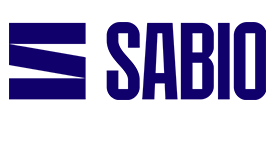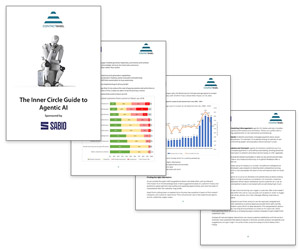Joe O’Brien, Head of Communications at Sabio Group, explains the customer satisfaction crisis and turning negative to positive.
Recently, a colleague of mine at Sabio pointed me in the direction of an interesting article that was published in the Daily Telegraph entitled ‘Why Aren’t We Being Served?’.
The feature – which was the cover story in the UK-based publication’s weekend magazine edition – was focused on the latest Customer Satisfaction Index (UKCSI) from the Institute of Customer Service – which painted a bleak picture for UK businesses.
The UKCSI is based on an online survey of over 15,000 consumers, who are representative of the UK adult population by region, age and gender. The most recent survey, published in January, comprises 59,250 customer experiences collected during the past 9 months.
Across the board, consumer happiness was shown to have declined year-over-year. From banking to utilities to services, not a single sector was spared from the downward trend.
It didn’t make for great reading…
According to the survey, customer satisfaction (C-Sat) in each of the 13 sectors covered was lower than a year ago.
C-Sat dropped 0.9% in banks and building societies while it fell 2.9% for services. But the real eye-opener was the abysmal 69.5 out of 100 satisfaction score for utilities – an entire industry failing to meet customer expectations.
So, what’s behind this steady erosion of the customer experience?
After having a think about it – and through speaking with some of our experts internally here at Sabio – I believe there are likely several factors at play…
The Lingering Pandemic Effect
The COVID pandemic disrupted standard operating procedures and forced rapid digital transformation for many businesses – and things haven’t quite been the same since.
Employees are burned out from staffing shortages, supply chains are still recovering and organisations are still adapting to hybrid and remote work.
Customer satisfaction may be a casualty of this operational turmoil.
Economic Turbulence
High inflation, rising interest rates, and fears associated with recession make for stressed-out customers and stressed-out employees.
Financial pressures and economic uncertainty breed irritability and impatience on both sides of the service interaction.
Customers have less tolerance for hiccups, and employees are more error-prone when distracted by money worries.
Digital Disruption
The rapid rise of digital channels, automation, and self-service processes has been a bit of a double-edged sword for organisations – particularly those with no real plan.
While digital channels improve efficiency and cost-effectiveness, poor execution can alienate customers, particularly those who crave the “human touch” – or at least some form of it – during their interaction with a brand.
Overdoing automation, or automating in the wrong places, and making self-service too complex is also a recipe for frustration.
Indeed, this is evidenced in the recent survey, with 35% of customers saying positive use of technology by an organisation has led them to use that organisation again – but nearly half (a whopping 45%) say poor use of technology has made them stop using an organisation altogether…
But what can organisations do to reverse this negative trend? There are a few key focus areas:
- Redouble employee engagement and training. Your staff are your front-line diplomats representing your brand. Make sure they feel valued, knowledgeable, and empowered to deliver stand-out service.
- Optimise digital channels and self-service capabilities. Make interactions simpler and more intuitive. Really think about it and have a plan to strike the right balance between automation and human assistance options.
- Embrace tools and partners to improve quality monitoring, insights analysis, and real-time responsiveness. Things like voice of the customer analytics, workforce engagement management, and intelligent knowledge management systems.
- Make customer experience a true organisation-wide priority. Elevate CX to the C-suite and the boardroom. Connect customer metrics to business goals and strategic initiatives.
Thoroughly Understand Your Customer
This is where specialists like ourselves at Sabio Group can be invaluable.
We work with major brands to analyse processes, optimise resources, implement leading technologies, and design amazing end-to-end customer journeys.
Our capabilities span consulting, systems integration, training, and managed services across voice, digital, and AI disciplines.
Whether it’s upgrading contact centre infrastructure, delivering workforce optimisation tools, or innovating with conversational AI and intelligent virtual assistants, Sabio helps companies see the bigger picture and execute a cohesive CX vision.
It all starts with thoroughly understanding customer needs through data analysis and journey mapping before then providing solutions and guidance that balances human and automated assistance.
This not only empowers and motivates our customers’ workforce but also tears down internal silos to deliver consistent, high-quality experiences across all touchpoints.
In this challenging environment, standing out with superior service and building a reputation for customer advocacy is more important than ever.
Organisations that leverage the latest thinking and technology to truly put the customer first will secure competitive advantage and reap more than just satisfaction – they’ll earn customer loyalty that drives sustainable business growth, moving the customer satisfaction dial from a negative to a positive.
For more information about Sabio - visit the Sabio Website
Call Centre Helper is not responsible for the content of these guest blog posts. The opinions expressed in this article are those of the author, and do not necessarily reflect those of Call Centre Helper.
Author: Sabio
Published On: 5th Mar 2024 - Last modified: 6th Dec 2024
Read more about - Guest Blogs, Sabio






 Sabio Group is a global digital customer experience (CX) transformation specialist with major operations in the UK (England and Scotland), Spain, France, Netherlands, Malaysia, Singapore, South Africa and India. Through its own technology, and that of world-class technology leaders such as Amazon Connect, Avaya, Genesys, Google Cloud, Salesforce, Twilio and Verint, Sabio helps organisations optimise their customer journeys by making better decisions across their multiple contact channels.
Sabio Group is a global digital customer experience (CX) transformation specialist with major operations in the UK (England and Scotland), Spain, France, Netherlands, Malaysia, Singapore, South Africa and India. Through its own technology, and that of world-class technology leaders such as Amazon Connect, Avaya, Genesys, Google Cloud, Salesforce, Twilio and Verint, Sabio helps organisations optimise their customer journeys by making better decisions across their multiple contact channels. 


































